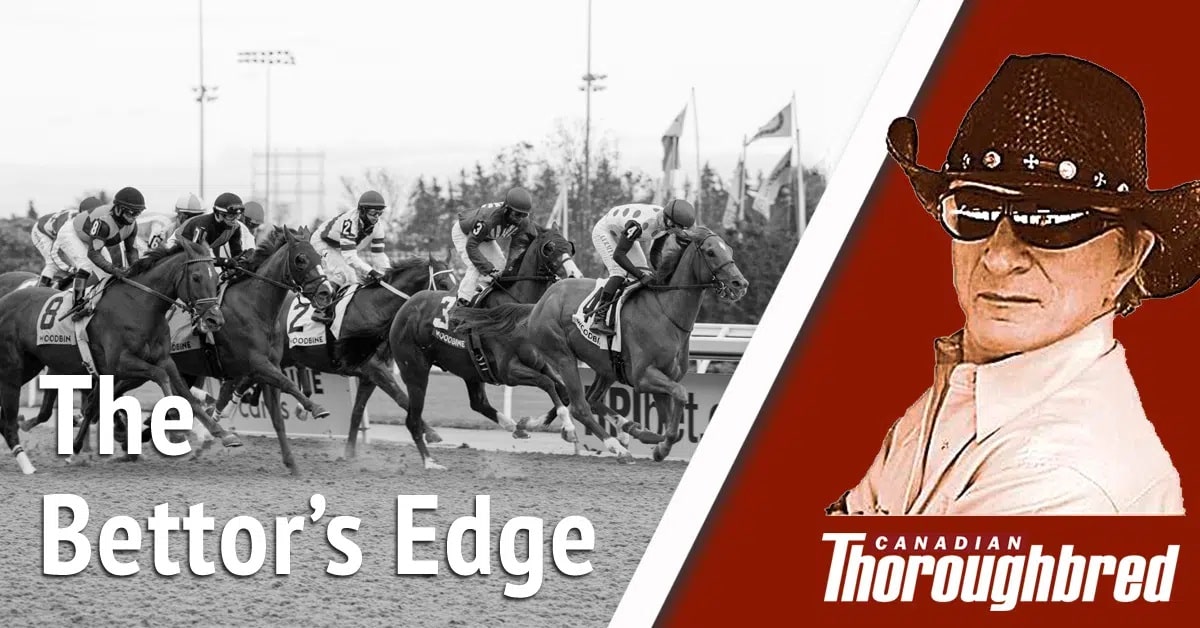Another year of Thoroughbred racing is in the books at Woodbine. So let’s put a microscope on tracks across the border to find the best examples of race results that best fit my betting rules. And what are my top 10 rules, starting with my most favoured?
1. ADDED-UP NUMBERS IN MAIDEN RACES: This is an excellent money-making tip gleaned years ago from a handicapping book. Add up two numbers for each horse in a maiden race: where the horse finished last time and the position of the horse at the first call of the race before that. Horses with the lowest added-up numbers are prime plays. One caveat: In maiden claiming races, beware of horses dropping from maiden allowance races, regardless of their added-up numbers.
2. CLOSING FRACTIONS IN TURF ROUTE RACES: How quickly does each horse in a turf route race close from 6 furlongs to the end of the race? At one mile, 24 seconds is the standard; at 1 1/16-mile it’s 30 seconds and at 1 1/8-mile it’s 36 seconds. When a horse is closing ground, knock off one-fifth second for each length the horse closes.
3. SPEED NUMBERS IN 7-FURLONG RACES: At the specialty distance of 7 furlongs, look for horses that have the highest speed number at that distance (or 7 ½ furlongs) anywhere in their past performances.
4. ROUTE SPEED CUTTING BACK TO A SPRINT: Horses that showed sharp early pace in route races, then tired, are prime contenders when they cut back to a sprint distance. Generally, they will make a late move and are excellent candidates for the bottom of triactors and superfectas but shouldn’t be discounted as possible win candidates, either.
5. “BOUNCE” CONTENDERS: A young horse may run big, winning by several lengths, then won’t race as well in his next start. He then may bounce back with an even bigger effort than his earlier win and may even beat the horse who beat him in his “off” race, generating a nice payoff.
6. HORSES MOVING INTO CLAIMING RACES FROM STARTER ALLOWANCE: A $10,000 starter allowance race is a much classier race than a $10,000 claiming race. So beware of horses even with seemingly bad form moving down into claiming ranks from start allowance. It seems most players don’t pay attention to that drop so the resulting payoff can be big.
7. GIANT PACE NUMBERS: When a horse has a pace number in the Equibase program that is 12 or more higher than any other horse in the field, he has a great chance of wiring the field, often at good odds.
8. HORSES WITH HIGH PLACE AND SHOW FINISHES: For whatever reason, some horses finish second or third in one-third to one-half of their races. You’ll be surprised how often you’ll be cashing when you wheel that horse in his favourite finishing position.
9. FIRST-TIME STARTER WORKOUTS AND DEBUT SIRES: I like to see 5-furlong workouts for first-time starters and, if I see 6 furlongs, that horse is an automatic play. So are youngsters whose sire’s debut percentage is in the high teens or 20s. (What percentage of a sire’s progeny win their very first race?) Debut sire stats are available for a monthly fee at DRF debut sire stats.
10. THE ‘X’ FACTOR: If horses were machines, this would be irrelevant. But since they aren’t, you must allow for seemingly bizarro results from time to time. Using “all” in a sandwich position in a triactor or superfecta or in the often-chaotic non-winners of two races lifetime (nw2L) race or claiming races for 3-year-olds could result in nice payoffs.
I could go on and talk about jockey/trainer stats and in-the-money finishes in stakes races but those 10 cover a lot of ground and my eyes especially light up when I come to races or horses that fit the first four criteria. The thing I like about rules is that they override opinions which, as we all have to admit, are mostly wrong.
Now let’s see how these rules best express themselves in upcoming races at a variety of tracks through the winter, my favourite being Santa Anita because horses seem to perform more consistently there.


